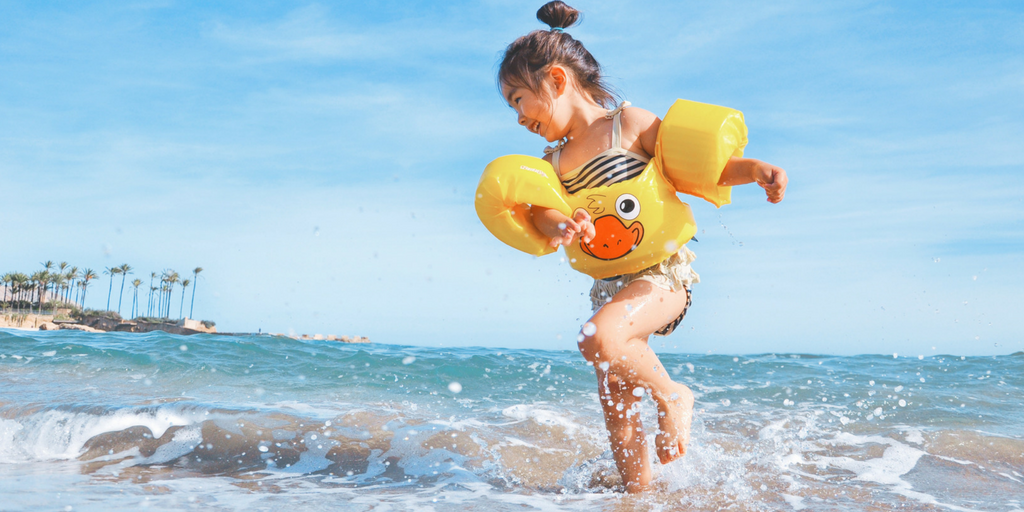I live in a town where a river passes through it. Creeks were in my backyard and lakes only miles away. My brother and I were always surrounded by water. And we loved it. You couldn’t keep me out of the water when I was little. Now that I am a parent, I made sure to teach my children how to swim as soon as they were ready. Here’s how I believe you can teach children to swim.
No Fear of the Water
Step one is to not give your children the option to be afraid of the water.
Here is what I did: When giving my children baths as newborns and babies, I didn’t think twice about pouring water on their head to rinse them off. Neither of my children fussed about it. It just because a part of their bath routine. I think even if they did fuss, I would still just do it because it is literally a second that water is on their face.
As my children got older, we would practice blowing bubbles in the bath tub. I can remember my son doing this at a much younger age than his older sister but that is because he always wants to copy her. Having them blow bubbles in the water helps to teach them about not being able to breath underwater, that they will have to catch a breath somehow, and to put their face in the water – an important part of swimming!
Teach Children To Swim at an Early Age
My mother-in-law has a pool that we frequent in the summer so my children have been in the pool since they were very young. I believe in getting children into pools, or truly whatever water you have whether it be lake, stream, river, whatever, at an early age. Let them know that water is OK. But once they are old enough to know better, obviously set some boundaries (no swimming without adults around, etc.).
We used this awesome baby floating activity center for when the children were able to sit up on their own. This also allowed them to be in the water without you restricting their movements, but still being right there for support.
As they got older, we would have them wear these Puddle Jumpers. They are U.S. Coast Guard approved too, so they worked great if we were to go out on a boat as well! The Puddle Jumpers let them have even more freedom in the water. What I liked most about the Puddle Jumpers is they allowed the children to be able to learn to swim on their stomach and kick their little feet, but still stay floating! Due to the thickness of the arm bands on the Puddle Jumper, it does make it hard to teach the children how to do arm rotations. So that is just something we had to practice when they weren’t wearing their flotation device.

Get To a Pool
I still remember going to swim lessons when I was little at my local university. And I sent my daughter as soon as she was old enough to our local YMCA indoor pool for lessons in the winter. My son will start this fall/winter. The Crunchy Mommy tried out the British Swim School and her children loved it. Whatever your options are, seek them out. I especially love sending my children to the pool in the fall-spring so that they are swimming year ‘round.
When you are in the pool, always remind children to kick their feet and do big arm circles to help with forward motion. Swimming isn’t something that is perfected overnight. It is an exercise that should be practiced as much as possible, not only because it is a great workout for everyone, but because knowing how to swim could one day save their life or someone else’s.
Just Keep Swimming
If you have a child who is nervous around water, take baby steps with them to make it a more comfortable setting. Don’t push them to do something they don’t want to do. As children get older, they may feel more comfortable trying something new, especially if other children are doing it.
As long as you just keep swimming and allow your child to be comfortable in the water, you are doing a great job. But do what you can to teach them to swim, or at least tread water.
Does your child(ren) know how to swim? Do you remember at what age he or she learned to swim? What tips would you suggest for parents to help acclimate their babies to water?






